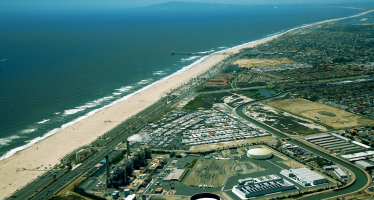Charter schools may face new era of opposition to funding

After a quarter-century of explosive increases in California, charter schools experienced all-time lows in growth the last two school years. And charters may also be facing an era of much harsher treatment from school boards allied with teachers unions who more than ever see charters as taking away resources that should go to conventional schools.
That was many education observers’ takeaway this week from the Los Angeles Unified School Board’s decision to approve a local moratorium on approvals of new charters until their impact on the state’s largest district is freshly assessed. District leaders had agreed to pass the resolution as part of their deal with United Teachers Los Angeles to end a strike that shut LAUSD schools for six days earlier last month.
Charters are privately operated public schools that hope to attract students from regular schools with their freedom to follow different teaching regimens. Some also offer specialized language or academic programs. Most are non-union.
From 1992 to 2016, charter schools went from zero students to more than 600,000 – about 10 percent of total K-12 students in California. The last two years, however, there was less than 2 percent growth in the number of total charters for the first time.
Charters initially faced brisk opposition from the California Teachers Association and the California Federation of Teachers, which had heavy influence in many districts thanks to the board members that union local chapters helped elect.
But in 2000, California voters approved Proposition 39 related to school financing. One provision requires that “school districts make available to all charter schools operating in their school district … facilities that will sufficiently accommodate all of the charter’s in-district students, and that facilities be ‘reasonably equivalent’ to other classrooms, buildings, or facilities in the district,” according to the state Department of Education page outlining how school districts should comply with the state law.
CalSTRS bailout spurs scrum for limited resources
Proposition 39 gave charters a potent tool to fight attempts to block them, leading to something of a cease-fire from unions. But the passage in 2014 of the California State Teachers’ Retirement System bailout not only isn’t having the effect of stabilizing school finances that some hoped, it’s created a more intense battle for district resources than ever.
Under the bailout, total contributions to CalSTRS will nearly double from 2013-14 to 2020-21 as hikes are phased in. But districts are required to contribute 70 percent of the new money – or close to $4 billion when the phase-in ends. Even with two more contribution hikes awaiting in 2019-20 and 2020-21, many districts across the state are already struggling to make their budgets balance.
That list starts with L.A. Unified, whose board was warned by the Los Angeles County Office of Education that the district couldn’t afford the two retroactive 3 percent raises it gave teachers to end the strike. The county office raised the possibility that the district’s finances could be so broken by 2020-21 that it could be subject to an outside takeover based on a state law requiring districts maintain minimum reserves.
L.A. Unified leaders hope to get the state Legislature to provide more funding for next school year. But the L.A. teachers union also wants the district to stop providing so much funding to the district’s 225 charters, which teach 112,000 of the district’s 486,000 students.
The wild card in a new cold war between teachers unions and charters is Gov. Gavin Newsom. While he has often praised charter schools as an important part of public education, he said while campaigning last year that he would sign legislation “requiring charter schools to be more transparent with their finances and operations and to adhere to stricter conflict of interest rules on their governing boards,” according to the EdSource website.
Charter school critics see this as an obvious response to the messy finances and scandals seen in some charters. Charter advocates see it as an ominous first step toward rolling back the charter movement. They backed former Los Angeles Mayor Antonio Villaraigosa in the 2018 governor’s race.
Chris Reed
Chris Reed is a regular contributor to Cal Watchdog. Reed is an editorial writer for U-T San Diego. Before joining the U-T in July 2005, he was the opinion-page columns editor and wrote the featured weekly Unspin column for The Orange County Register. Reed was on the national board of the Association of Opinion Page Editors from 2003-2005. From 2000 to 2005, Reed made more than 100 appearances as a featured news analyst on Los Angeles-area National Public Radio affiliate KPCC-FM. From 1990 to 1998, Reed was an editor, metro columnist and film critic at the Inland Valley Daily Bulletin in Ontario. Reed has a political science degree from the University of Hawaii (Hilo campus), where he edited the student newspaper, the Vulcan News, his senior year. He is on Twitter: @chrisreed99.
Related Articles
U.S.-Calif. Stuck in Stagnation Spiral
JULY 26, 2011 BY JOHN SEILER Welcome to the desert of economic and jobs growth. I keep reminding people that
Scientists rebuke Coastal Commission over desalination
SACRAMENTO – The Coastal Commission’s stated concern that a proposed Huntington Beach desalination plant’s intake pipes pose a threat to
Video: Jerry Brown’s biggest challenge in CA
Chapman University Law School Dean Tom Campbell explains to CalWatchdog.com’s editor-in-chief Brian Calle how he believes the biggest challenge Gov.




